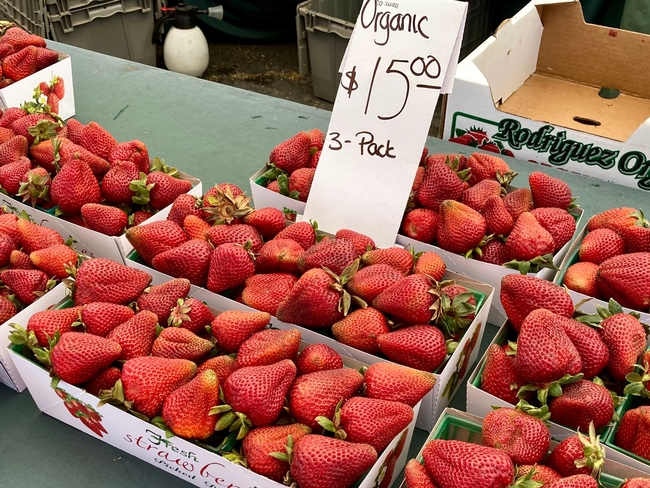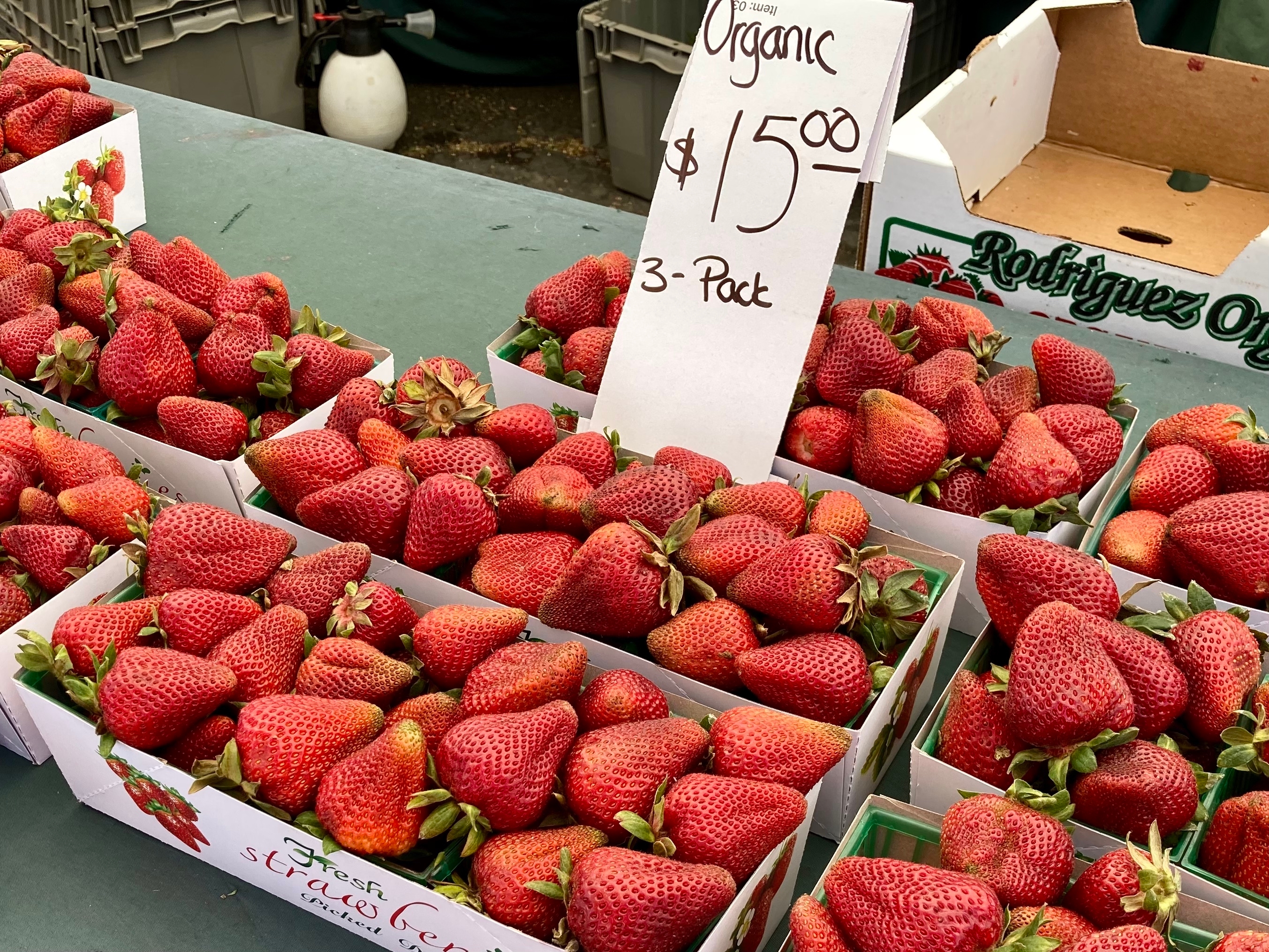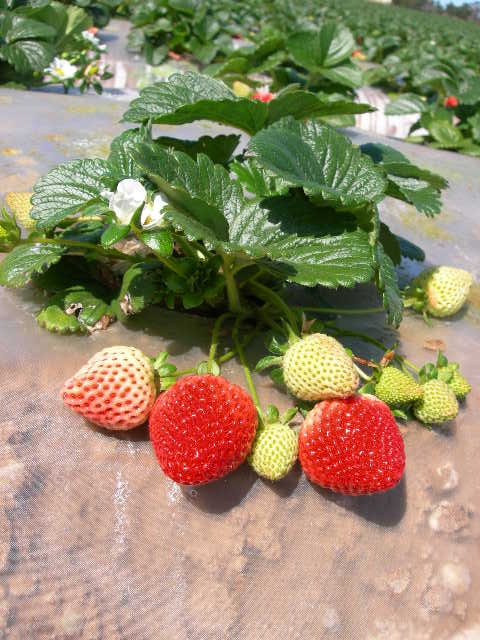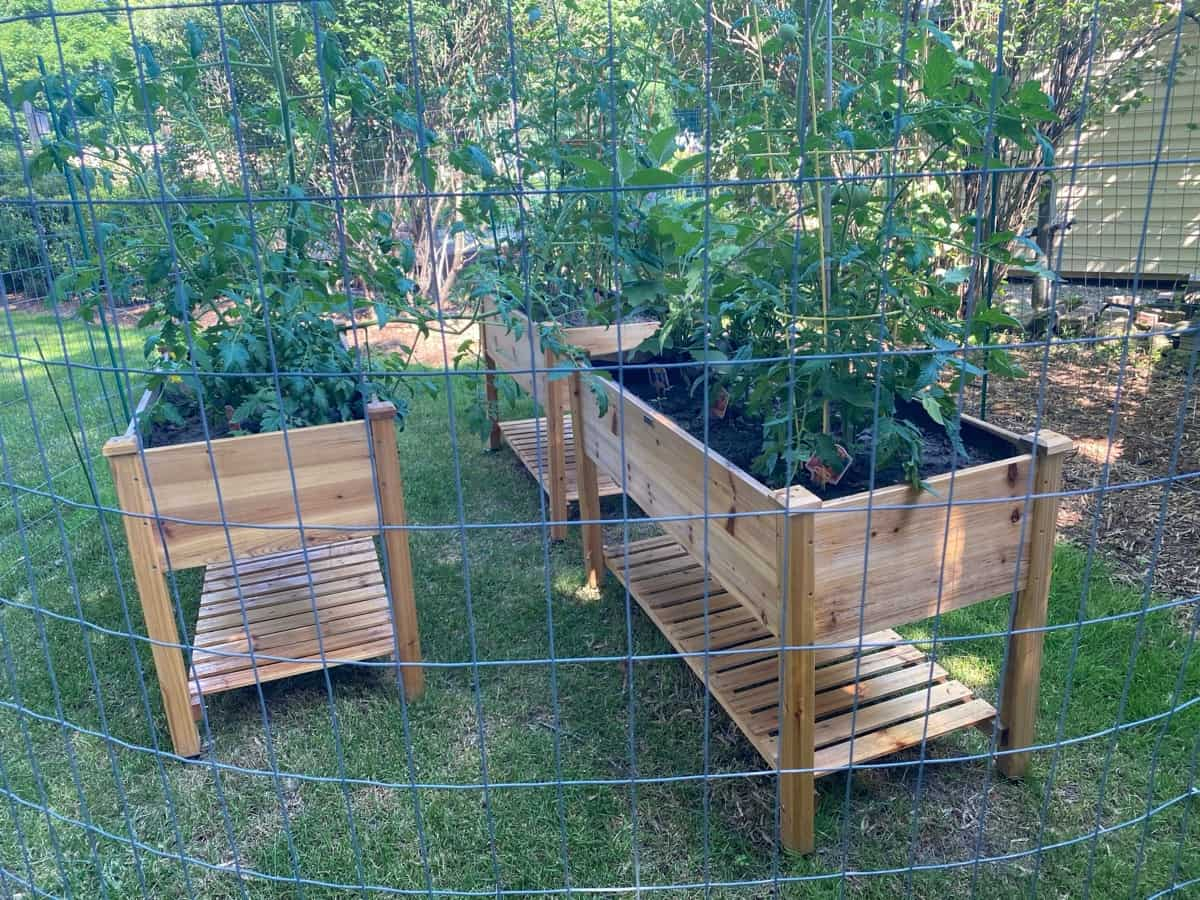UC study breaks down the costs of growing organic strawberries
Growers can compare their own cost and yield estimates with those from the UC Organic Strawberry Cost Study. Photo by Mark Bolda
Are you considering growing organic strawberries commercially on the Central Coast?
To help potential and current growers assess financial feasibility, the University of California has estimated the costs of growing and harvesting organic strawberries for the fresh market in Santa Cruz, San Benito, and Monterey counties.
"This revision of the latest cost of production study incorporates the latest in labor costs as well as updates on cultivation techniques," said the co-author of the Study Mark Bolda, UC Cooperative Extension Strawberry and Cranberry Advisor in Santa Cruz, San Benito. and Monterey Counties.
The new study, “Sample Costs to Produce and Harvest Organic Strawberries in the Central Coast Region-2022,” was published by UC Agriculture and Natural Resources and UC Davis Department of Agricultural and Resource Economics.
The analysis is based on a hypothetical, well-managed organic strawberry farm using practices common to the region, but the costs, materials, and practices presented in this study will not apply to all farms. Growers, agricultural advisers and specialists from UC Cooperative Extension, pest management advisers and others provided input and reviewed the methods and results of the study.
"Current growers can use this as a benchmark to compare against their own cost and yield estimates to ensure they have an accurate picture of the profitability of their organic strawberry business," said the co-author Brittney Goodrich, UC Cooperative Extension Agricultural Economics Specialist. "Many agricultural lenders use these studies as a benchmark for determining whether to approve operating or investment loan applications from current and potential strawberry growers."

The Labor Study section includes information on California's new minimum wage and overtime laws.
Researchers assume a farm size of 30 contiguous acres of leased land, with strawberries planted on 27 acres. The study includes a list of regionally suitable strawberry varieties, but no specific variety is used in the study. The harvest is harvested by hand and packaged in trays containing eight 1-pound shells from April to early October, with peak harvest from June to August.
The authors describe the assumptions used to identify the current costs of production material inputs and cash and non-cash overhead. Range analysis charts show net profits over a range of prices and returns. Other tables show monthly cash costs, costs and returns per acre, hourly equipment costs, and annual equipment, capital and operating costs for the entire farm.
>The expanded section of the Labor Study includes information on California's new minimum wage and overtime laws.
"He reached a wider audience this time through presentations of the material to Cal Poly [San Luis Obispo] students and also to a group of USDA officials at the California Strawberry Commission," Bolda said. .
"All of this just underscores the value of these studies to California growers and others working in agriculture," Bolda said.
Free copies of this study and other sample cost of production studies for many products are available. To download the cost studies, visit the UC Davis Department of Agricultural and Resource Economics website at https://coststudies.ucdavis.edu.
This cost-benefit study was funded by the Department of Agricultural and Resource Economics, University of California, Davis.
For more information or an explanation of the calculations used in the studies, contact Jeremy Murdock, UC Davis Department of Agricultural and Resource Economics, at jmmurdock@ucdavis.edu or UC Cooperative Extension's Bolda at (831) 763-8025. < /p>


Growers can compare their own cost and yield estimates with those from the UC Organic Strawberry Cost Study. Photo by Mark Bolda
Are you considering growing organic strawberries commercially on the Central Coast?
To help potential and current growers assess financial feasibility, the University of California has estimated the costs of growing and harvesting organic strawberries for the fresh market in Santa Cruz, San Benito, and Monterey counties.
"This revision of the latest cost of production study incorporates the latest in labor costs as well as updates on cultivation techniques," said the co-author of the Study Mark Bolda, UC Cooperative Extension Strawberry and Cranberry Advisor in Santa Cruz, San Benito. and Monterey Counties.
The new study, “Sample Costs to Produce and Harvest Organic Strawberries in the Central Coast Region-2022,” was published by UC Agriculture and Natural Resources and UC Davis Department of Agricultural and Resource Economics.
The analysis is based on a hypothetical, well-managed organic strawberry farm using practices common to the region, but the costs, materials, and practices presented in this study will not apply to all farms. Growers, agricultural advisers and specialists from UC Cooperative Extension, pest management advisers and others provided input and reviewed the methods and results of the study.
"Current growers can use this as a benchmark to compare against their own cost and yield estimates to ensure they have an accurate picture of the profitability of their organic strawberry business," said the co-author Brittney Goodrich, UC Cooperative Extension Agricultural Economics Specialist. "Many agricultural lenders use these studies as a benchmark for determining whether to approve operating or investment loan applications from current and potential strawberry growers."

The Labor Study section includes information on California's new minimum wage and overtime laws.
Researchers assume a farm size of 30 contiguous acres of leased land, with strawberries planted on 27 acres. The study includes a list of regionally suitable strawberry varieties, but no specific variety is used in the study. The harvest is harvested by hand and packaged in trays containing eight 1-pound shells from April to early October, with peak harvest from June to August.
The authors describe the assumptions used to identify the current costs of production material inputs and cash and non-cash overhead. Range analysis charts show net profits over a range of prices and returns. Other tables show monthly cash costs, costs and returns per acre, hourly equipment costs, and annual equipment, capital and operating costs for the entire farm.
>The expanded section of the Labor Study includes information on California's new minimum wage and overtime laws.
"He reached a wider audience this time through presentations of the material to Cal Poly [San Luis Obispo] students and also to a group of USDA officials at the California Strawberry Commission," Bolda said. .
"All of this just underscores the value of these studies to California growers and others working in agriculture," Bolda said.
Free copies of this study and other sample cost of production studies for many products are available. To download the cost studies, visit the UC Davis Department of Agricultural and Resource Economics website at https://coststudies.ucdavis.edu.
This cost-benefit study was funded by the Department of Agricultural and Resource Economics, University of California, Davis.
For more information or an explanation of the calculations used in the studies, contact Jeremy Murdock, UC Davis Department of Agricultural and Resource Economics, at jmmurdock@ucdavis.edu or UC Cooperative Extension's Bolda at (831) 763-8025. < /p>
What's Your Reaction?














![Three of ID's top PR executives quit ad firm Powerhouse [EXCLUSIVE]](https://variety.com/wp-content/uploads/2023/02/ID-PR-Logo.jpg?#)







